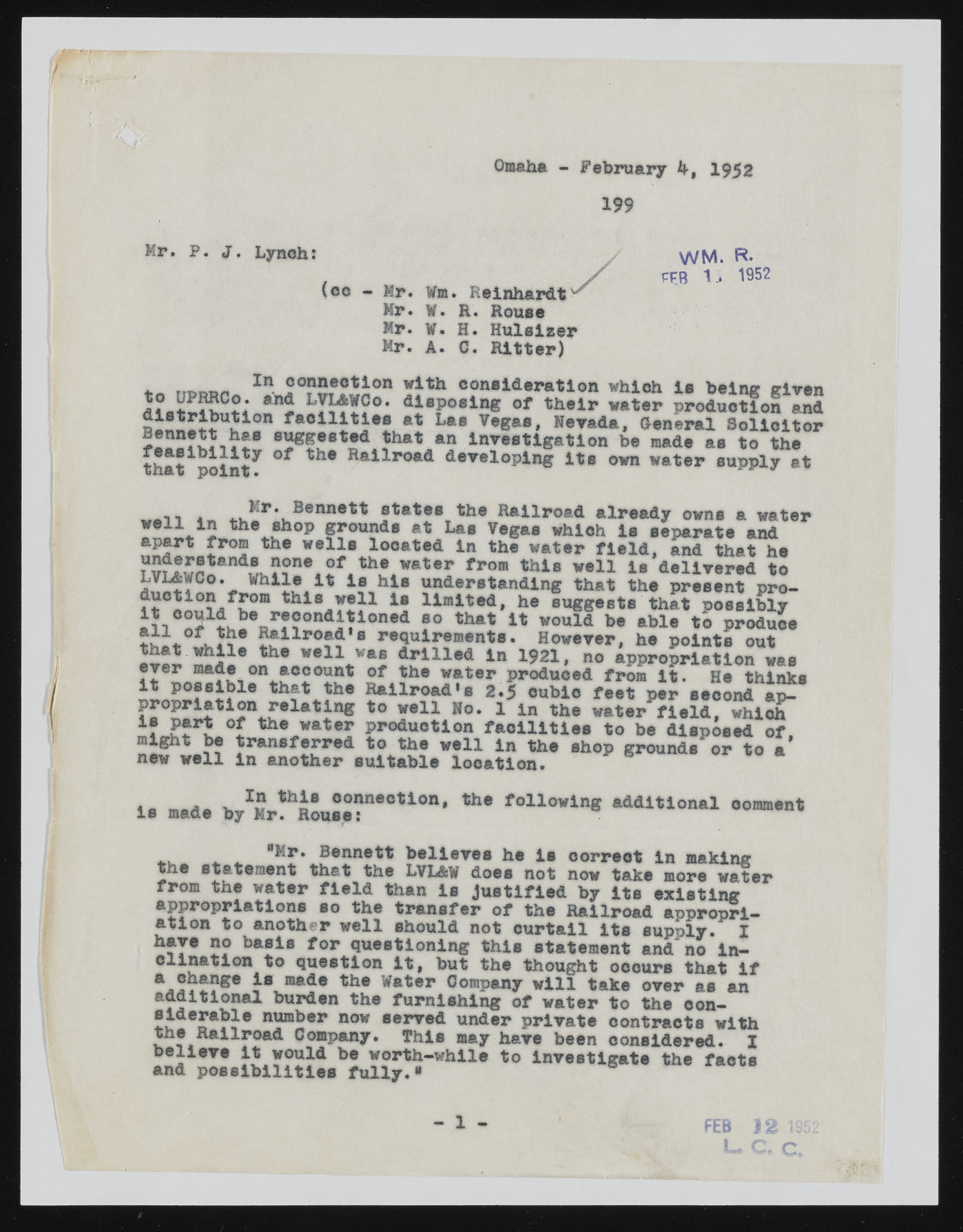Copyright & Fair-use Agreement
UNLV Special Collections provides copies of materials to facilitate private study, scholarship, or research. Material not in the public domain may be used according to fair use of copyrighted materials as defined by copyright law. Please cite us.
Please note that UNLV may not own the copyright to these materials and cannot provide permission to publish or distribute materials when UNLV is not the copyright holder. The user is solely responsible for determining the copyright status of materials and obtaining permission to use material from the copyright holder and for determining whether any permissions relating to any other rights are necessary for the intended use, and for obtaining all required permissions beyond that allowed by fair use.
Read more about our reproduction and use policy.
I agree.Information
Digital ID
Permalink
Details
Member of
More Info
Rights
Digital Provenance
Publisher
Transcription
Omaha - February k, 19 52 199 M r . P . j . Lynch: (ee - Mr. W®. Reinhardt Mr. W. R. Roues Mr. ¥. H. Hulsizer Mr. A. 0. Ritter) WM. R. FFB t J 1952 to o t s «m „ Y*th 0.°n*W.ratlon whioh 1 to UPRRCo. and LVL&WC©. disposing of thalr water pr. obdoucltnigo ng larn.dn faelliti #® at Las v«g®«, Nevada, General Solicitor suggested that an Investigation be made as to the ftheaats ibpoiilnitt.y of the Railroad developing its own water supply at -, , Mr. Bennett states the Railroad already owns a water well in the shop grounds at Las Vegas whioh is separate and apart from the wells located in the water field, and that he 2f,the W8t<fr fro® thi® W is delivered to l v l &w Co . While it is hie understanding that the present pro-duction fro® this well is limited, he suggests that possibly it couid be reconditioned so that it would be able to produce Sr Railroad’s requirements. However, he points out that while the well was drilled in 1 9 2 1 , no appropriation was ever made on account of the water produced from it. He thinks i!LP2fSi?le ***?** Railroad’s 2 .5 cubic feet per eecond appropriation relating to well No. 1 in the water field, which < ?SrS °£ the water production facilities to be disposed of, might be transferred to the well in the shop grounds or to a new well in another suitable location. i, sc made by Mr. Rousoeo:nn®ctlon, the following additional comment *Mr. Bennett believes hs is oorrsot in the statement that the LVL&W does not now take more water fro® the water field than is Justified by Its existing appropriations so the transfer of the Railroad appropriation to another well should not curtail ita supply. J have no basis for questioning this statement and no Inclination to question It, but the thought occurs that if m&d® th® Water Company will take over ae an additional burden the furnishing of water to the eon-number now served under private contracts with the Railroad Company. This may have been considered. I believe it would be worth-while to investigate the facts and possibilities fully.* FEB J 2 1952 L . C . C . - 1 -

